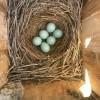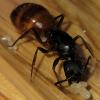1. Location - Collected near Yuma
2. Date - Spring
3. Habitat - Sparse desert scrub
4. Length - Queen ~10mm, major ~4mm
5. Color, hue, pattern, texture - Queen mesosoma and gaster concolorous black, head is dark ferruginous with infuscated occipital and frontal areas. Worker head and mesosoma ferruginous, gaster black
6. Distinguishing characteristics - Alates in spring.
7. Anything else distinctive - numerous colonies active diurnally.
8. Nest description - tumulus ranging from inconspicuous to 16cm - the wind was quite heavy that day and was making tumulus difficult to stay in conspicuous mounds.
9. Just to note, these queens were collected as alates from pre-flight colonies and the workers were collected from the same colony.
Preface/acknowledgement of key validity and flaws:
I do acknowledge that the publicly available Myrmecocystus keys, mainly the Endiodioctes key, do have flaws and don't include all known species or variants. With this I do want to bring up something I found after doing this collection series. There is a different population of what keys to M. flaviceps that I had a specimen of last year which seems to have noticeable differences. I will continue this after the identification process.
Queen keying~~~
Queen frontal face and profile before keying.
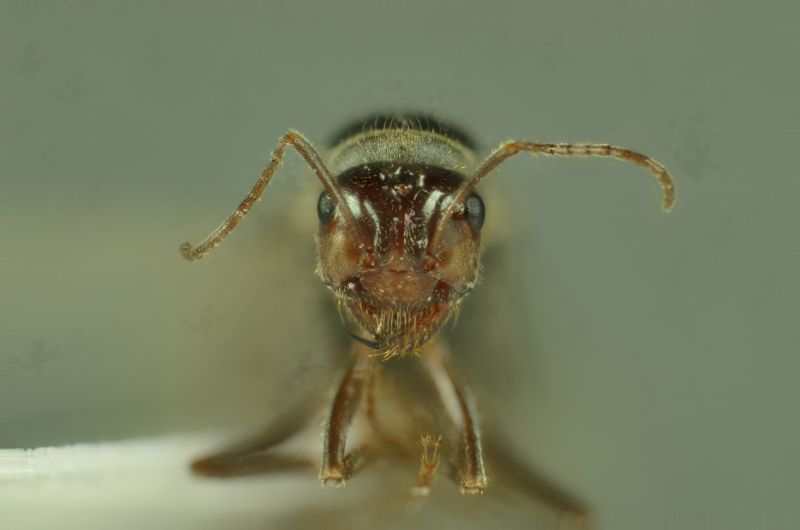
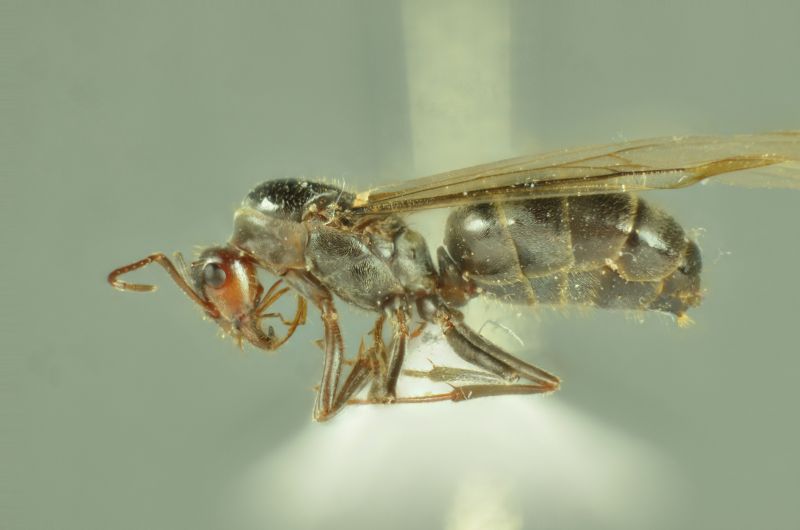
1
- Penultimate segment of maxillary palp more than twice wider in basal third as at apex, the remaining segments very broad; gaster ferruginous . . . . . 2
- Penultimate segment of maxillary palp slender, more or less parallel-sided, never more than 1.5 x wider in basal third than at apex, remaining segments slender; gaster brownish or blackish . . . . . 3
Using figure 1a, it is clear that the stated segment of the maxillary palp is slender and more or less parallel-sides and never exceeding 1.5 x wider in basal third than at the apex. In figure 1b, it is clear the gaster is blackish. This negates couplet two and takes this to couplet 3.
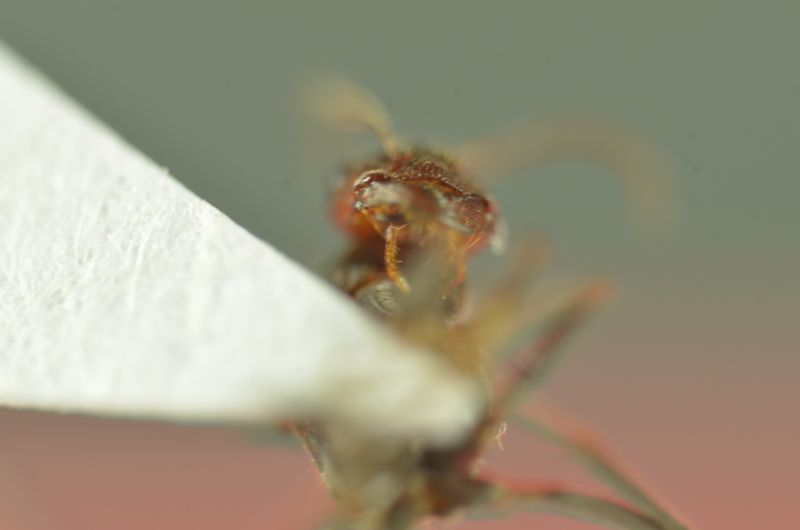
(figure 1a)

(figure 1b)
3
- Parapsis closely, uniformly punctate; malar area with abundant standing hairs; HW usually in excess of 2.0 mm . . . . . 4
- Parapsis with punctures usually of two sizes and variably spaced, never uniformly dense; malar area usually with few or no standing hairs; HW usually less than 1.9 mm . . . . . 8
Using the below figure, it is clear that the parapsis have variably spaced and not uniformly dense punctate. The malar area in figure 3b also shows that there are few standing hairs. This combination negates couplet four and moves this to couplet eight.
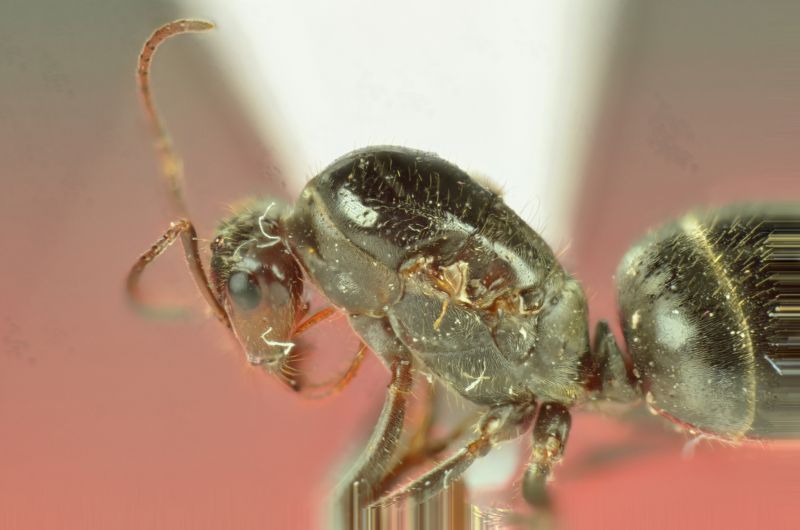
(figure 3a)

(figure 3b)
8
- Median area of first two terga very sparsely punctate . . . . . 9
- Median area of first two terga uniformly, densely micropunctate . . . . . 11
When viewing figure 8 it may be difficult to make out, but the median area of the first two terga are clearly sparsely punctate. This negates the option of couplet 11 and takes this to couplet nine.
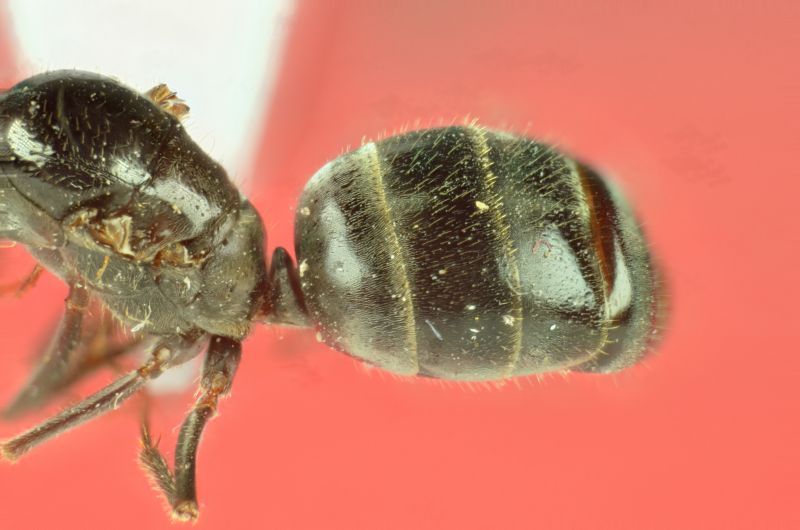
(figure 8)
9
- Median area of third and fourth terga nearly impunctate, similar to first two terga; scutellum very sparsely punctate; HW less than 1.9 mm . . . . . 10
- Median area of third and fourth terga closely and uniformly micropunctate; scutellum abundantly, finely punctate; HW 2.0 mm or more . . . . . Myrmecocystus semirufus
This will be quite difficult to make out since I was unable to pick up the punctate in any positioning of the specimen for figure 9a, but I assure that there is no micropunctate and that it is sparse punctate at best. using the following figure, figure 9b, the scutellum is clearly sparsely punctate. In addition, the head width is also clearly under 1.9mm. This combination takes this to couplet 10 and negates the option of M. semirufus.
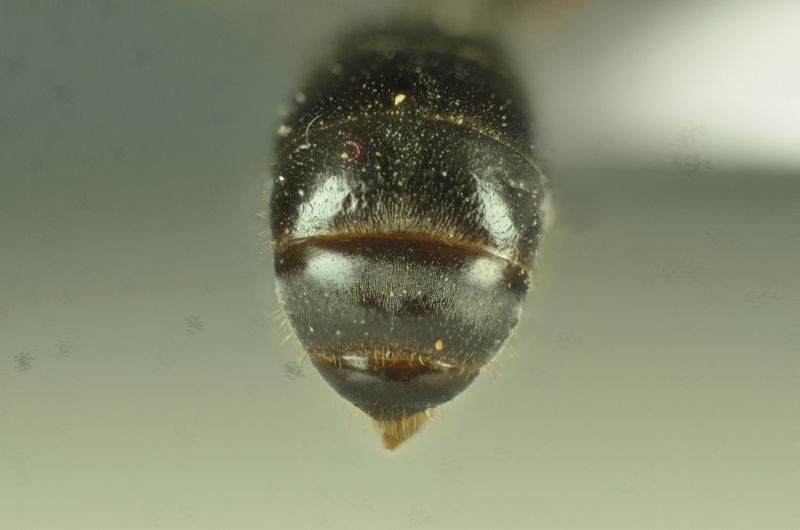
(figure 9a)
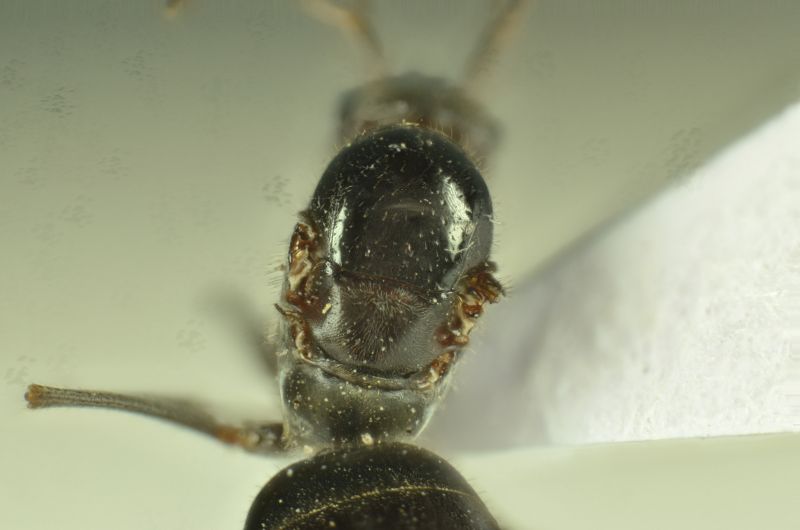
(figure 9b)
10
- Frontal lobes closely micropunctate and with scattered coarse punctures; hairs along inner eye margin about as long as on scape; inner face of fore femur with numerous erect hairs along entire length, hairs about as long as those of scape . . . . . Myrmecocystus koso
- Frontal lobes sparsely, coarsely punctate; hairs inconspicuous or absent along inner eye margin; when present, shorter than those of scape; inner face of fore femur with few erect hairs, and these on apical half and much shorter than those of scape . . . . . Myrmecocystus flaviceps
Using figure 3b, the frontal lobes are not closely micropunctate, but are sparsely and coarsely punctate. Using the same figure, There is an absence of hairs along the inner eye margin. Using figure 10, the inner fore femur has few erect hairs. This combination negates M. koso and leaves M. flaviceps to be the species.
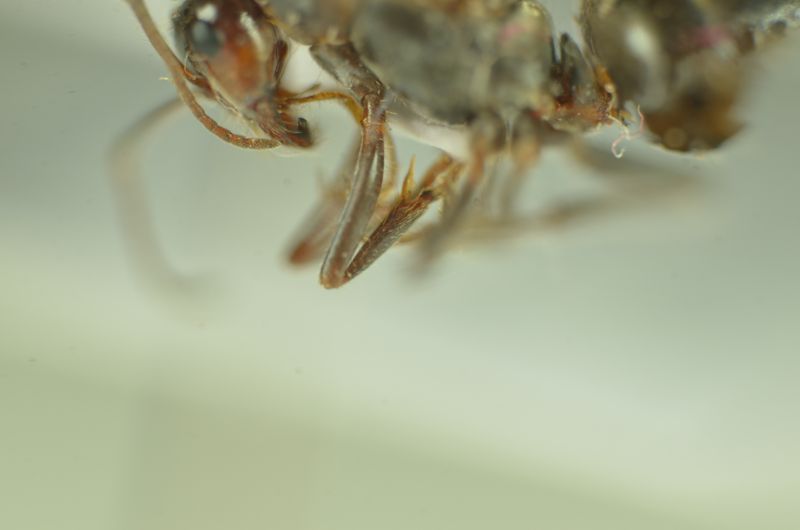
Now, back to what I started to mention during the preface. This M. flaviceps I collected matches perfectly to the description of M. flaviceps by Snelling of the type specimens collected in Yuma. What had first stumped me is what I used to think was M .flaviceps. On Antweb, there is a near-concolorous, square-headed, abruptly tapering occipital corner queen specimen from a different locality that I used to think was M. flaviceps. I have had this Antweb species before and didn't think about checking the M. flaviceps description until I keyed this recent collection. I unfortunately do not have specimens of the Antweb species besides a singular worker from a captive colony that was misidentified as M. tenuinodis. When I do eventually get a specimens of it, I will do a comparison.
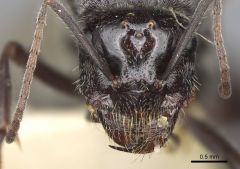 Antweb specimen.
Antweb specimen.
Worker keying~~~
Worker head and profile. Just to note, this is a major which was quite distinctly different from the minors not only in coloration, but also size.
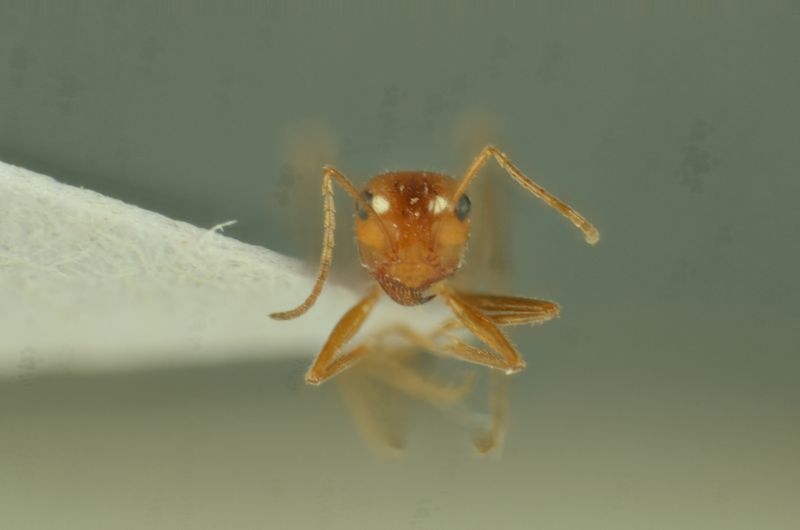
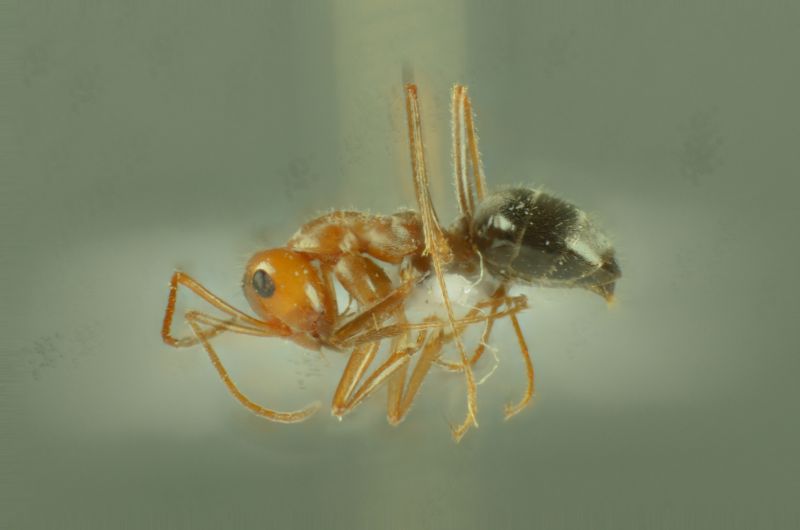
1
- Abundantly hairy species: 20+ erect hairs on malar area in frontal view; scape, femora and tibiae with numerous suberect to erect hairs on all surfaces; first three (usually four) terga with dense pubescence (except Myrmecocystus intonsus); HW of major usually in excess of 1.7 mm . . . . . 2
- Less hairy species: fewer than 20 erect hairs on malar area in frontal view, usually fewer than 6; scape and femora often sparsely hairy; third tergum often sparsely pubescent; HW of major less than 1.7 mm . . . . . 6
Using the first figure below, figure 1, it is clear that there is fewer than 20 erect hairs on the malar area - the scapes are also sparsely hairy. This negates couplet two and moves this to couplet six.

(figure 1)
6
- Malar area, in frontal view, with six or more erect hairs evenly distributed between eye and base of mandible . . . . . 7
- Malar area, in frontal view, with not more than four erect hairs, these confined to lower half, near base of mandible . . . . . 11
It is clear when viewing figure 1 that the malar area has no more than four erect hairs which are confined to the lower half. This takes this to couplet 11 and negates couplet seven.
11
- Longest occipital hairs at least equal to MOD in majors . . . . . 12
- Longest occipital hairs no more than 0.6 x MOD usually about 0.5 . . . . . 15
When viewing figure 1, there occipital hairs are clearly not equal to the MOD and are around 0.5 x MOD, which negates couplet 12 ands moves this to couplet 15.
15
- Tergum III with little or no pubescence . . . . . 16
- Tergum III with dense pubescence . . . . . Myrmecocystus flaviceps
Using figure 15, it is evident that tergite three has dense pubescence which negates couplet 16 and leaves this matching M. flaviceps.
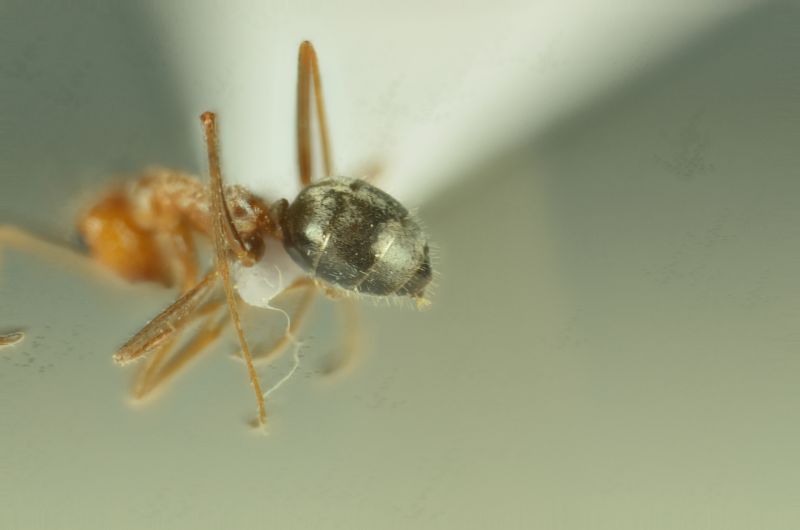
(figure 15 - note that it is tilted so that one can count each tergite to make sure they are looking at tergite three.)



